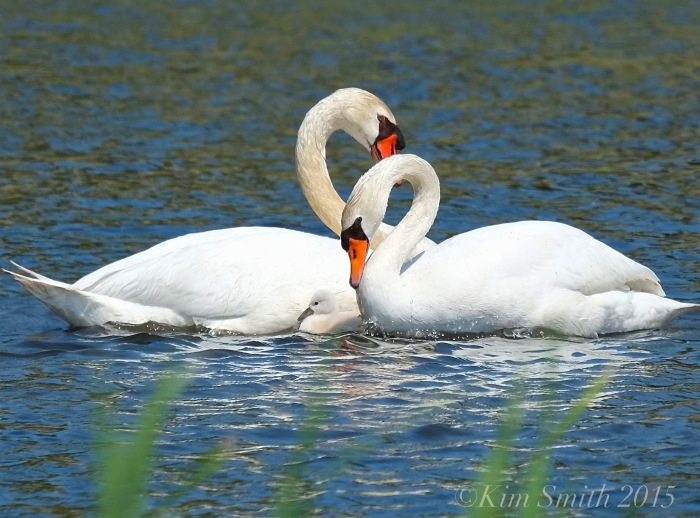 Side-by-side Comparison ~ Female Swan Back, Male Swan Front
Side-by-side Comparison ~ Female Swan Back, Male Swan Front
Have you ever wondered whether you are looking at a male or female swan? I had often until I learned that the male’s black protuberance at the base of the bill swells during the breeding season. Very recently, I learned that the fleshy black knob has a name. So now rather than calling it a knob, nobble, thingamabob, or that black protuberance above the bill, I can say blackberry, and you can too. That really is an often used term in Europe, their native home. The blackberry is also unique to Mute Swans; no other species of swans has this feature.
 I’ve posted this photo before however, it shows very well the different sizes of the male and female’s blackberries. Male, left; female, right.
I’ve posted this photo before however, it shows very well the different sizes of the male and female’s blackberries. Male, left; female, right.

gorgeous photos as usual!
LikeLiked by 1 person
Thank you so much Valerie!
LikeLike
As usual – great shots. That one with the two swans and their baby between is just heartwarming. I never knew about that “knob thingamajig” either
LikeLiked by 1 person
Thank you Terry. I didn’t mention that the neck of the male swan is thicker too, but that is difficult to discern unless you are looking at just the right angle.
LikeLike
Great research Kim and beautiful Photos side by side! 🙂 Dave & Kim 🙂
LikeLike
Thats very interesting, I have wondered about that. Can you help me out on my family of swans? There are 7, 5 young ones, all very big now, so I cant tell who mom and pop are. The young ones since birth have been 3 greyer colored and 2 white. Can this be whether they are male or female? They are down by the river right now and still very much grey ones and white ones.
LikeLiked by 1 person
Sorry I didn’t see this Jan but if you are reading at some point. No, the color of the cygnet’s feathers does not matter–some are just loosing their downy baby feathers sooner, and within the same clutch some cygnets are naturally whiter. Anyway, I would love to see your swans if you have a family again this year 🙂
LikeLike
Thank you all for your labor and time you dedicate to GMG. I appreciate the little black knob information. Found it as with others, interesting, I feel fortunate to see our swans all season. Can you tell me please: How do I tell the difference in our beautiful sea gulls? They, like the Swans, look very much alike. Thanks in advance.
LikeLiked by 1 person
There are many species of gulls but in most, it is much more difficult to tell the difference between male and female, without sexting. With Herring Gulls, our most common, the bills are very slightly different shaped, but you need to see them side-by-side to compare.
Most species of birds have a cloaca, which is a vent on the underside from where they mate, and go pooh. Only a few species, like swans and geese, have any outward genitalia, and it is usually small.
Recently I took a photo of a pair of Herring Gulls mating. You know which one is which because male birds typically jump onto the back of the female and they rub, cloaca to cloaca. You’re fortunate to see a bird mate because the act lasts less than a few seconds. I’ll find the photo and post it.
If you are wondering how male and female gulls find each other, one reason is believed to be because birds have more types of photoreceptors than do humans. People have three types of photoreceptors, or cones, in their eyes, which allow them to see red, green, and blue and the full spectrum of colors in between. Birds have four types of photoreceptors. They can see red, blue, and green, and ultraviolet patterns as well. And they have alot more of the four types, too.
LikeLike
There is a pair of Mute Swans living in the harbor near me. I just noticed and was wondering if the color of their legs and feet correspond to their sex? The larger (male?) has black legs and feet, where as the smaller has a slight pinkish grey color legs and feet?
LikeLike